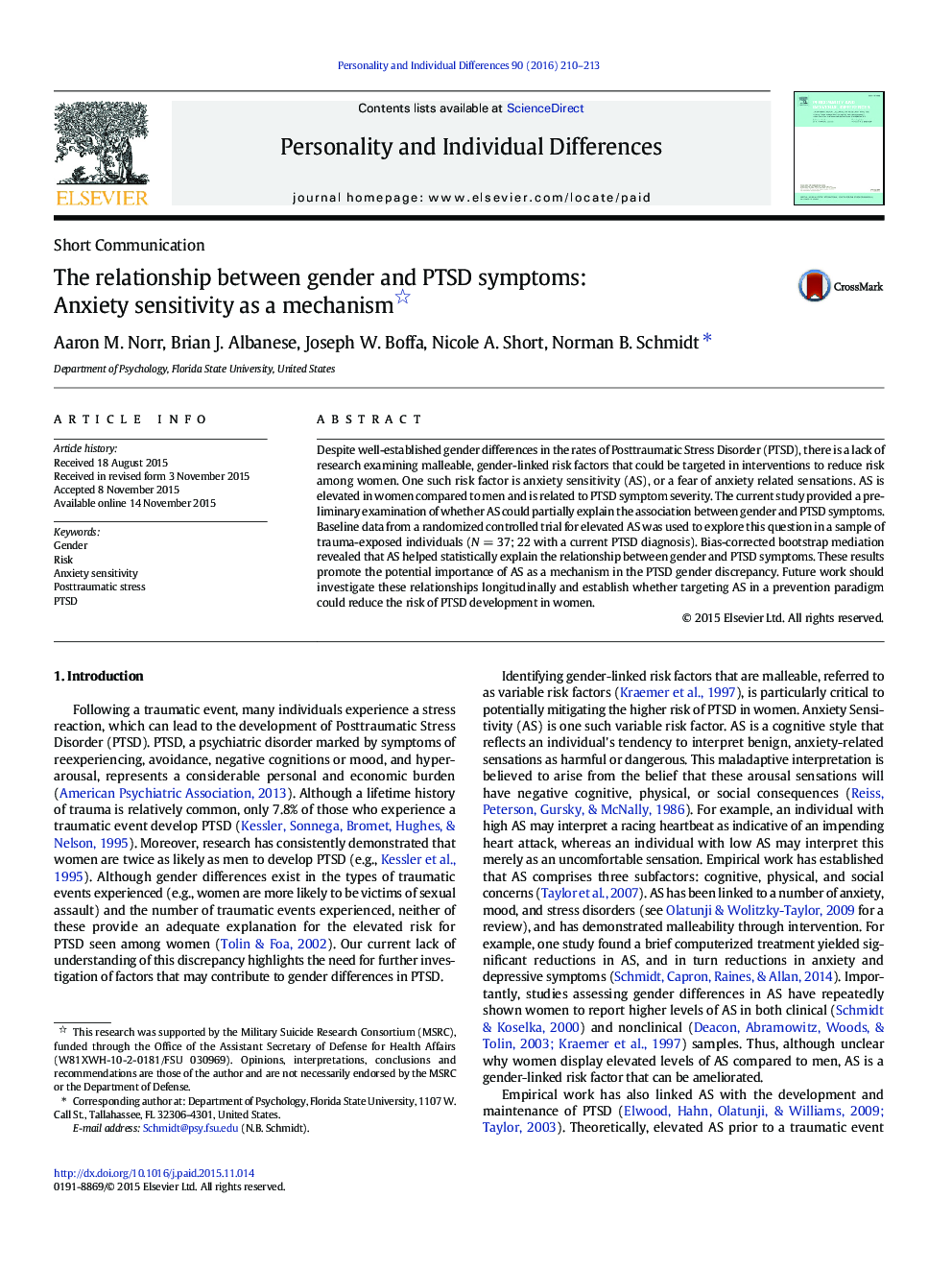| Article ID | Journal | Published Year | Pages | File Type |
|---|---|---|---|---|
| 889881 | Personality and Individual Differences | 2016 | 4 Pages |
•Investigated the role of anxiety sensitivity (AS) in the gender PTSD relationship•AS helped statistically explain the relationship between gender and PTSD symptoms.•AS could potentially be a mechanism in the PTSD gender discrepancy.•Replication and longitudinal investigations are important future work.
Despite well-established gender differences in the rates of Posttraumatic Stress Disorder (PTSD), there is a lack of research examining malleable, gender-linked risk factors that could be targeted in interventions to reduce risk among women. One such risk factor is anxiety sensitivity (AS), or a fear of anxiety related sensations. AS is elevated in women compared to men and is related to PTSD symptom severity. The current study provided a preliminary examination of whether AS could partially explain the association between gender and PTSD symptoms. Baseline data from a randomized controlled trial for elevated AS was used to explore this question in a sample of trauma-exposed individuals (N = 37; 22 with a current PTSD diagnosis). Bias-corrected bootstrap mediation revealed that AS helped statistically explain the relationship between gender and PTSD symptoms. These results promote the potential importance of AS as a mechanism in the PTSD gender discrepancy. Future work should investigate these relationships longitudinally and establish whether targeting AS in a prevention paradigm could reduce the risk of PTSD development in women.
